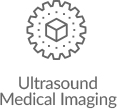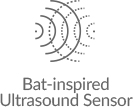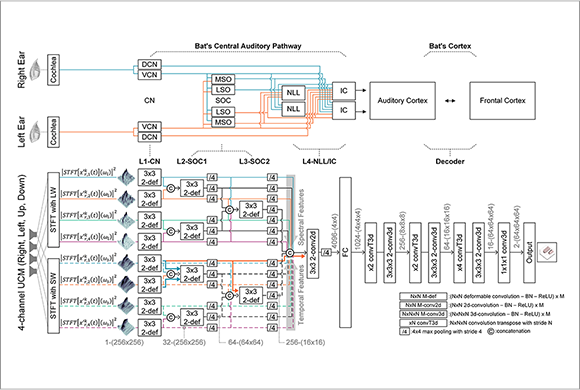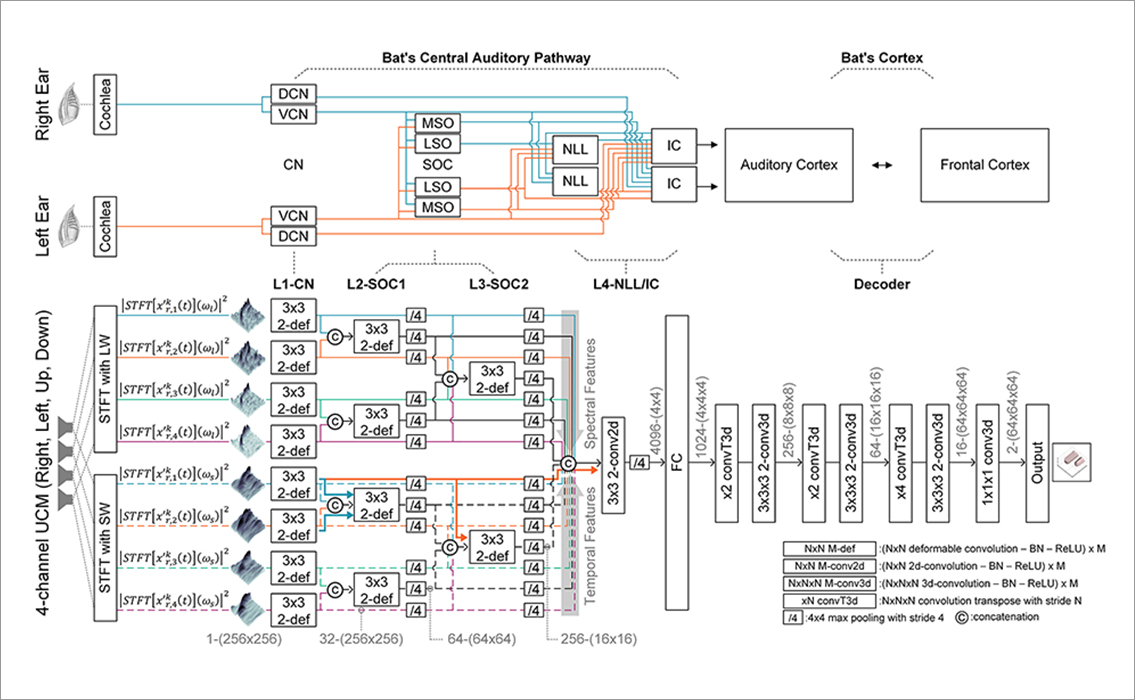
RESEARCH
Bat-inspired Ultrasound Sensor
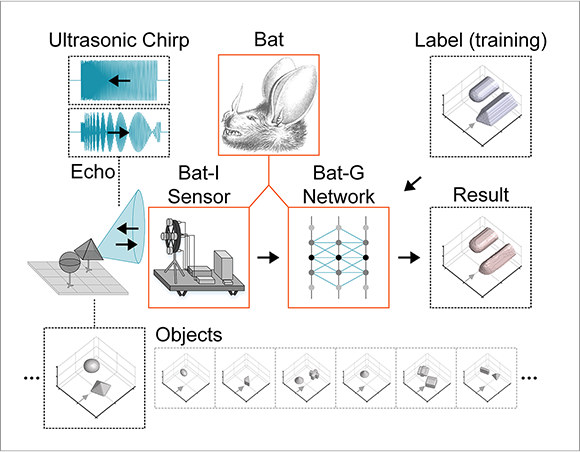
Live bats demonstrate that the properly used ultrasound can be used to perceive 3D space. With this in mind, a neural network referred to as a Bat-G network is implemented to reconstruct the 3D representation of target objects from the hyperbolic FM (HFM) chirped ultrasonic echoes. The Bat-G network consists of an encoder emulating a bat's central auditory pathway, and a 3D graphical visualization decoder. For the acquisition of the ultrasound data, a custom-made Bat-I sensor module is used.
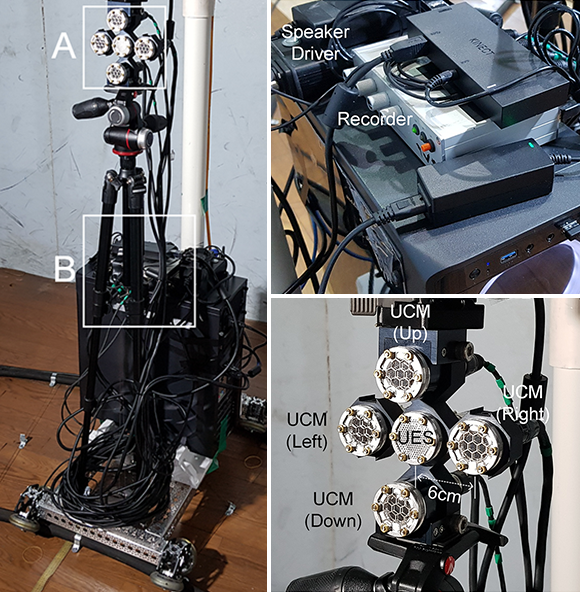
Bat-inspired imaging (Bat-I) sensor emits broadband FM signals and records echoes reflected from the target objects. The recorded data transformed into spectrogram are fed into the Bat-G network for training and the network eventually infers the object's 3D representation. The ultrasonic electrostatic speaker (UES), placed at the center of a sensing module, broadcasts the ultrasonic chirp in the frequency range of 20-120 kHz with the maximum power of 78 dB SPL at 1 m. The UES is driven by a class AB speaker driver with a maximum power of 10 W. Four ultrasound condenser microphones (UCMs) are placed right, left, up, and down of the UES with the separation of 6 cm. The UCMs have a broad and flat frequency response in 20-150 kHz with the attenuation less than -6 dB. The recorder amplifies the received signals from the UCMs with the maximum gain of 40 dB and digitizes at a sampling rate of 750 kSample/s.
Live bats with real neural network recognize the surroundings in real time. From these, we can infer the fact that the echolocation problem can be solved efficiently with the help of the artificial neural network. Therefore, we designed a feed-forward neural network to inversely reconstruct a 3D image from the collected ultrasound data, referred to as a bat-inspired graphical visualization (Bat-G) network. The sensory-to-image conversion of bats involves the neural interactions between the nuclei on the central auditory pathway (through the brainstem and the midbrain) and the auditory cortex (AC). From the sensory input, it is believed that the auditory nuclei extract temporal and spectral features needed for the echolocation and then pass them to AC through monaural, binaural, ipsilateral, and/or contralateral connections. The architecture of Bat-G net is heavily inspired by the neuroanatomical auditory pathway of bats.













